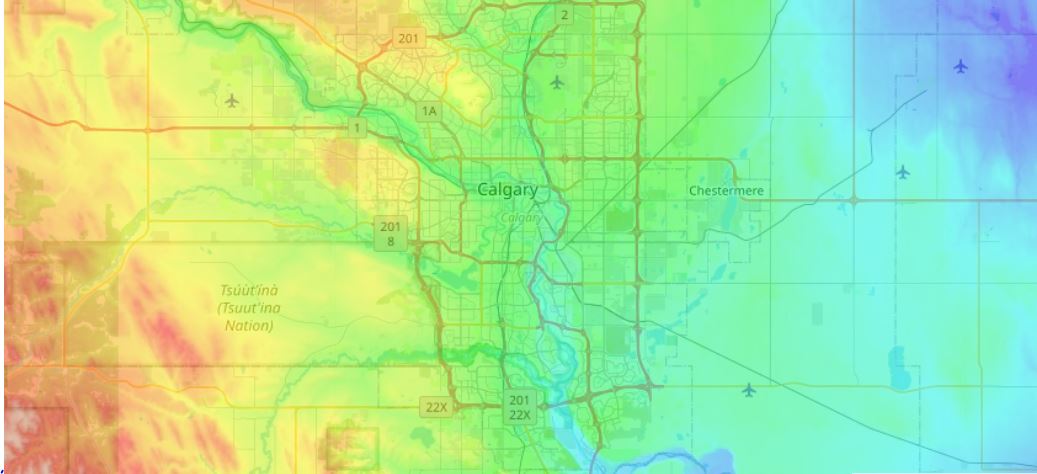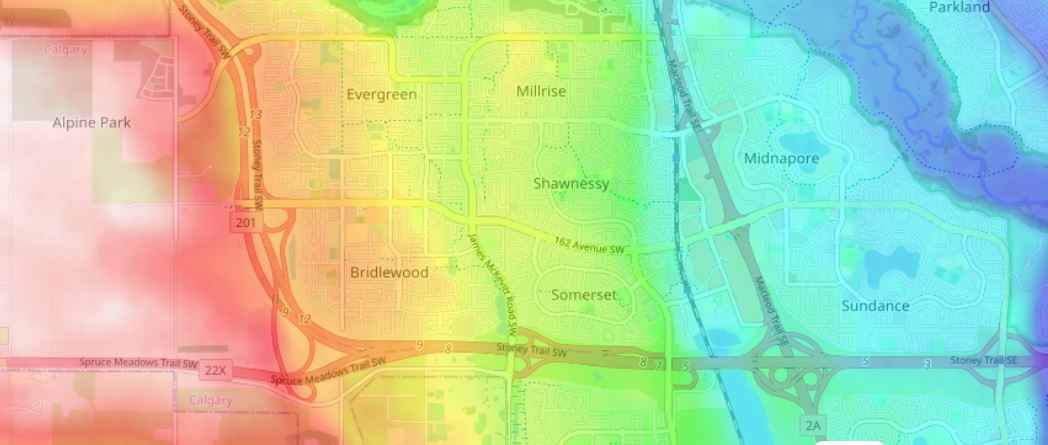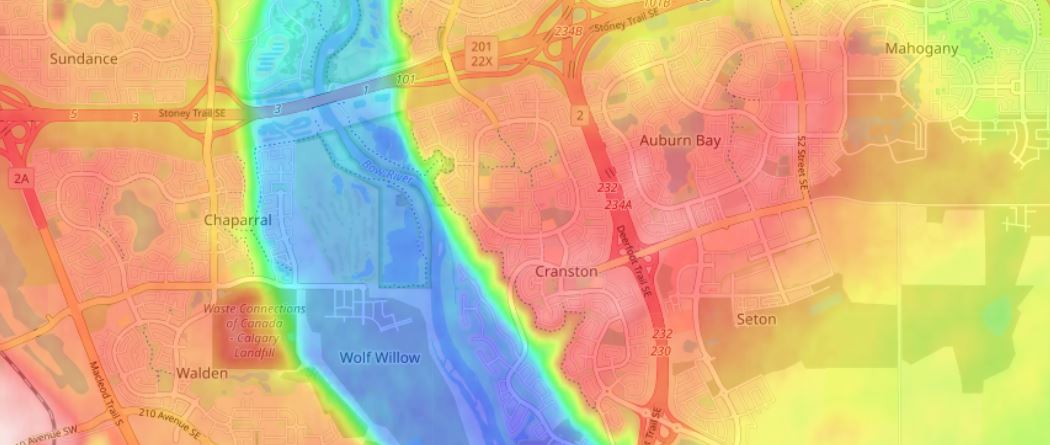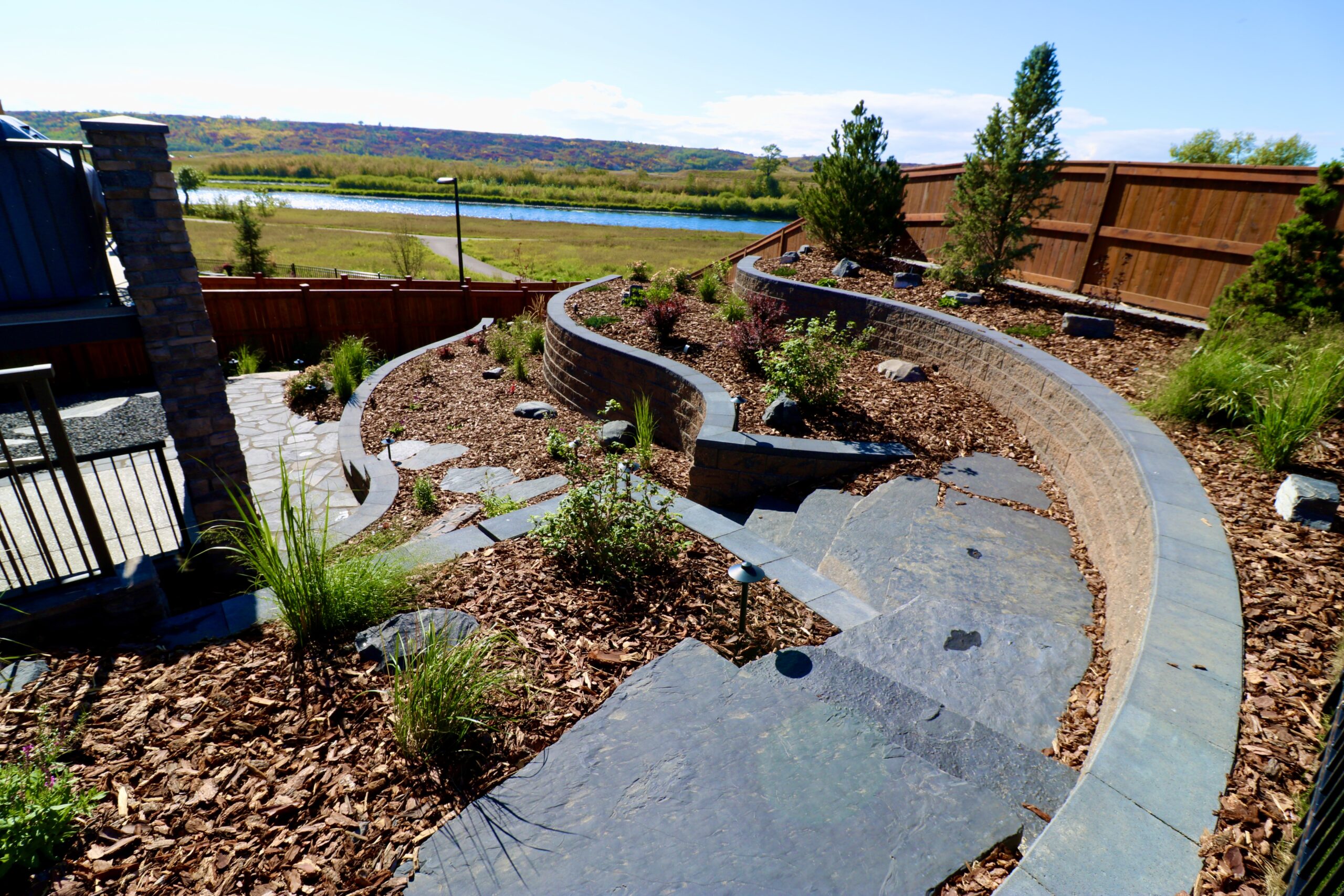Calgary Landscape Design and Retaining Walls
For most Calgarians, researching on the topic of landscape design will either take them to a local landscapers’ website or a news article. What’s interesting about online landscaping news is that very few articles mention Calgary’s topography. Topography entails the natural and artificial features of the land, including the changing elevations of the land. Even when topography is discussed, like in this CBC article, the focus is on sunshine. This article on the SE Calgary community of Rockland Park just mentions topography as a synonym for land features created by a natural rock formation and the Bow River.
Looking at the below topographic map of Calgary, illustrating elevation levels, Calgary looks to have very gentle slopes.
When we zoom in to individual Calgary neighbourhoods like Silverado, Sundance, Auburn Bay, Cranston, etc. we can see there are many homes built on slopes. Land developers do their best to minimize this sloping by working with earth moving companies but leveling off Calgary to be one even plane is both impossible due to costs and poor planning for water drainage.
This is where landscape design comes in and specifically, the use of retaining walls.
A panoramic mountain backdrop sets Calgary apart as one of the most recognizable cities in Canada. Within the rolling foothills of Southern Alberta, Calgary NW is known for its diverse terrain, which ranges from plateaus to valleys. The lots there are mostly built on slopes.
If you’ve ever tried to mow a steep hill, you know it’s not an easy task and can be quite dangerous. The task of mowing up a steep incline can be very tiring and energy-consuming. In addition, watering those hillsides can cause runoff – which causes soil erosion – and pooling.
Having a retaining wall on your sloped property is an obvious advantage in your landscape design. Your property can be made more flat and usable with a retaining wall. If you prefer, you can also transform your property into a picturesque terrace. Property owners have the option of many different types of installations.
Build a Tiered Retaining Wall
By terracing sections of your sloped backyard, you can create flat surfaces. You can use these flat surfaces to plant flowers or ornamental vegetation that creates an attractive design.
A retaining wall should be constructed using concrete, stone pavers, or wooden posts. Stone pavers are a great choice if you’re building something long-term. A french drain must be installed as part of the retaining wall system for retaining walls that are built on slopes.
Natural Stones retaining wall
Adding natural stones or rocks to your garden can give your sloped backyard a great look. Pair the natural stone with leafy green vegetables and seasonal flowers. Your garden is enhanced by the contrast between the natural stone steps and the plants bordering them, which creates a near-perfect look.
What else can be added to the retaining wall?
Create a meandering path
One can easily navigate a sloped garden using a winding path. It also prevents one from slipping and falling. The feature provides gardeners with a focal point by directing attention through the landscape.
Design a Natural Rock Garden
There are many different shapes and sizes of rocks that make up a rock garden. You would choose this option if cultivating on a hillside is difficult for you.
Nevertheless, you can solve the puzzle by deliberately arranging the rocks. Rather than growing on a hillside, plants that are rock-friendly will thrive on a stable base.
Gardening with vegetables
Why not install raised beds for growing vegetables in your sloped backyard? It gets enough sunlight, why not take advantage of it? You can arrange wooden boxes or crates in a staircase-like arrangement for the most part. Root vegetables should be grown in the deeper parts of the bed, and herbs in the shallow portions.
Watering cans are useful
Watering cans on a slope are another backyard idea on a budget. By using this technique, you can create the appearance of a water feature in your garden without incurring the high cost of building a real one.
Your sloped backyard should be equipped with watering cans arranged as follows.
From the topmost watering can to the bottom one that pools water, the cans should have long snouts that let water flow down.
Waterfalls that are not too large
Waterfalls naturally occur in steep and sloping areas. You can create an artificial waterfall in a sloped backyard in order to make the most of the space available.
Your green garden will be transformed into an urban oasis. The sound of water cascading down the slope will delight nature lovers.






Leave a Reply